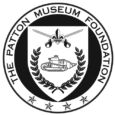Frequently ASked Questions
The reduction in tanks at the museum occurred over a decade ago when the US Army Armor Center and School relocated from Fort Knox to Fort Benning (Now Fort Moore), Georgia, a decision made by the highest levels of the US Government and the Defense Department. This move aimed to support soldier training, with most armor artifacts transferred to the Armor School. The Patton Museum’s focus shifted to leadership education for ROTC cadets at Fort Knox. The Armor and Cavalry Collection continues to grow and occasionally opens to the public during select events. More information can be found on the US Army Armor & Cavalry Collection’s Facebook page.
(4) The U.S. Army Armor & Cavalry Collection | Fort Moore GA | Facebook
It’s safe in the US Army Armor and Cavalry Collection
(4) The U.S. Army Armor & Cavalry Collection | Fort Moore GA | Facebook
If you’re at the closed gate on Fayette Ave there is a sign on the gate telling you how to get to the museum. After over two years of trying to contact Apple Maps and Waze, only Google Maps updated their GPS to the new museum gate located on US 31W. If you have a direct line to someone at Apple or Waze to get our GPS directions updated, please help us.
Link to Google Maps:
No, his car accident in 1945 had far too many unplanned stops to be anything other than an accident that resulted in General Patton’s injury. Patton’s accidental death at the height of his fame is no different than many other celebrities who died at the height of their fame – it continues to draw conspiracy theories and sell publications.
The museum does not own or have access to individual service records. Contact the National Personnel Records Center at National Personnel Records Center (NPRC) | National Archives Also – when Soldiers from World War II were discharged, they were often given an extra copy of their discharge paperwork to put on file with their County clerk. Try contacting the County Clerk of the County the veteran resided in when discharged, this may be easier than requesting the file from the NPRC listed above.
Due to limited museum staff, our archives are generally closed to outside research. The majority of our Patton-related paperwork is manuals and certificates owned by the General. Patton’s complete military personnel file can be viewed / downloaded from the National Archives here:
National Archives NextGen Catalog
General Patton’s papers and diaries are held by the Library of Congress, some of the papers are digital:
George S. Patton Papers: Diaries, 1910 to 1945, Available Online | Library of Congress (loc.gov)
The museum staff will not appraise any items. The staff is happy to collaborate with our peers at other museums about artifacts, but we do not authenticate items for private or commercial entities – ie we won’t certify that it’s really General Patton’s toothpick holder so it does better at the next “Questionable Collectables” auction.
Army Museums are fairly selective in artifacts they agree to take as donations due to limited storage space and having multiple examples already in the museum system. The first step is always sending photos and a description to info@generalpatton.org DO NOT SEND ITEMS DIRECTLY TO THE MUSEUM WITHOUT PRIOR STAFF PERMISSION. ITEMS RECEIVED WITHOUT NOTICE WILL BE RETURNED TO SENDER OR MAY BE DISPOSED OF IF THE SENDER CANNOT BE REACHED. Seriously, don’t. We lose half a day re-packing it and it costs taxpayer money to ship it back. Send a photo via email first.
Only in very rare circumstances. Sending a photo and description of the item to info@generalpatton.org is the first step.
No. The museum is not affiliated with the U.S. Treasury Department. The Ft. Knox Depository is heavily guarded and monitored. No public interaction is permitted. Unauthorized photos and visits will be met be U.S. Treasury Police.
